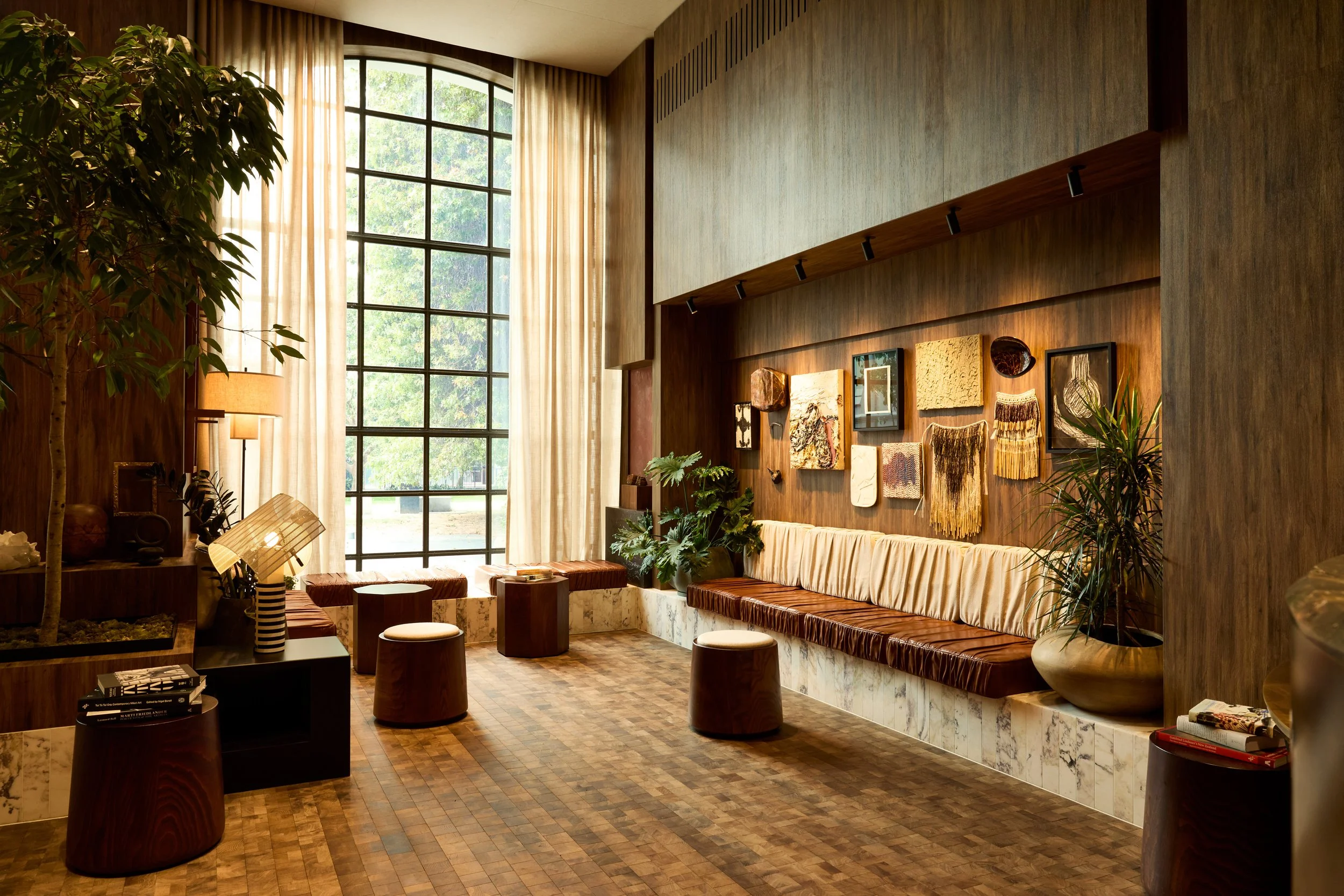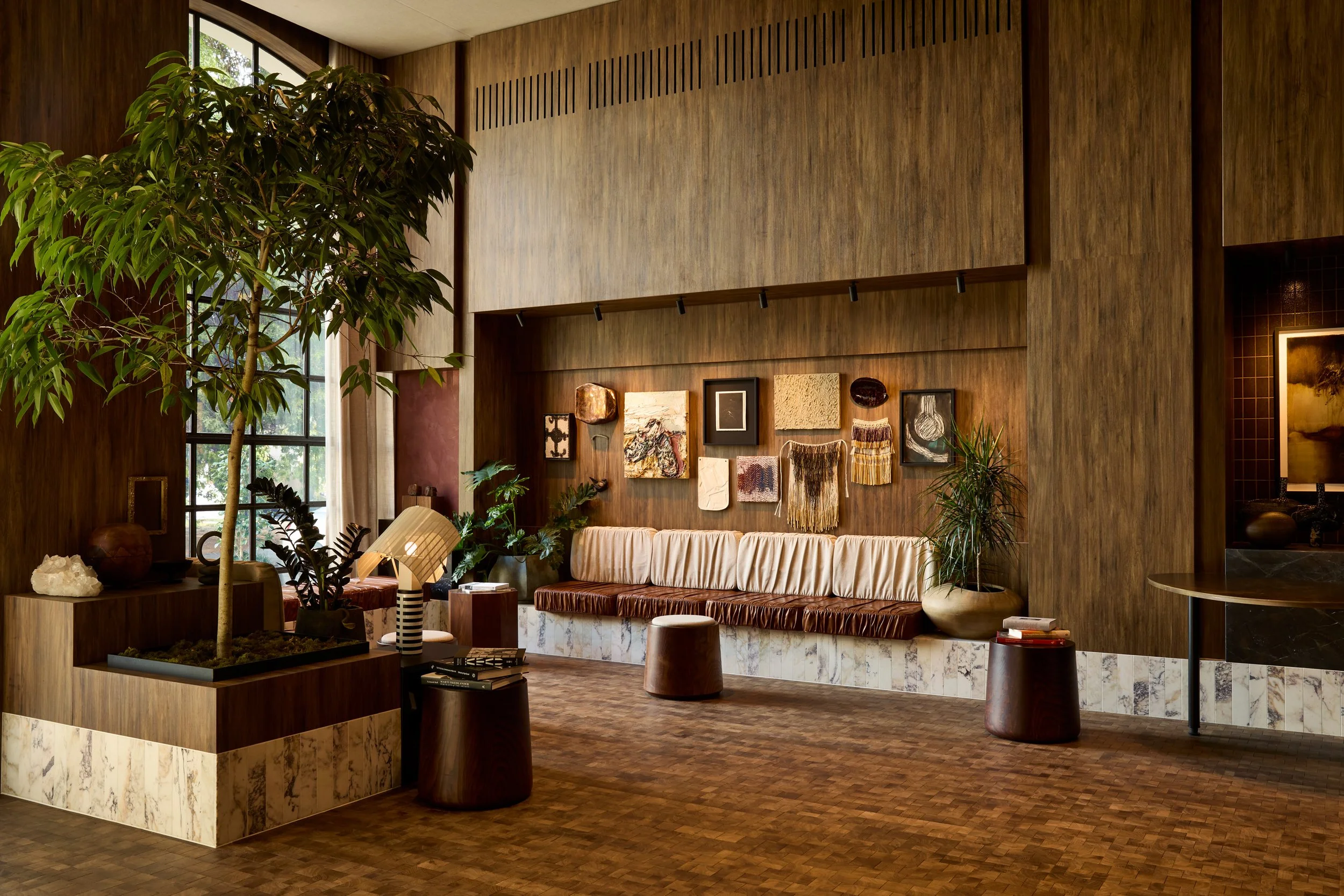On Design : Styling Auckland’s Hotel Indigo with Simone Haag
When it comes to interiors that feel both lived-in and elevated, Simone Haag is in a league of her own! The Melbourne-based stylist is known for her intuitive layering, reverence for vintage, and ability to craft spaces that feel deeply personal. For the newly unveiled Hotel Indigo in Auckland, Haag was brought on to lend her signature touch to the hospitality space, interpreting the brand’s unique DNA through a local lens.
In this exclusive Q&A, Haag opens up about the design story behind the project—how she balanced commercial demands with curated charm, the importance of emotional resonance in hotel interiors, and why storytelling remains the ultimate luxury.
Simone Haag photographed by Lillie Thompson
Hotel Indigo in Auckland is a beautiful blend of local culture and global design—how did you approach curating a space that feels authentically Aotearoa while still keeping your signature Simone Haag aesthetic?
The invitation to work on Hotel Indigo in Auckland was a coveted invitation. I wanted the space to feel connected to Aotearoa, with all artworks, sculptures and ceramics sourced from local artists and makers—people whose work is deeply rooted in the landscape and culture.
At the same time, I naturally brought in my own aesthetic—layered, a little unexpected, and always about finding beauty in the mix. It was less about making a big design statement and more about creating a space that feels authentic, welcoming, and quietly refined.
I loved discovering pieces that told their own stories and letting those take the lead and ultimately embedding the spirit of place through meaningful curation.
Your work often leans into narrative and emotion—what kind of story did you want this hotel to tell guests as they walk through the doors through art objects and books?
The space tells a story of connection: to place, to craftsmanship, and to beauty found in the unexpected. There’s a quiet rhythm to how the interiors reveal themselves—from pieces by local makers that reflect the textures and tones of Aotearoa, to sculptural forms that catch the eye and spark curiosity. I wanted guests to feel like they’ve arrived somewhere thoughtful, not styled to perfection, but layered with meaning.
For me, it’s less about a singular story and more about creating a feeling—warmth, discovery, and a sense of being both grounded and uplifted.
Hotel Indigo places a huge emphasis on sense of place – and we wanted the FOH team to be able to tell that story confidently and authentically but story telling aside, we ultimately wanted to create a lobby environment that felt residential and welcoming, that encouraged interaction – with the books and objects and would continue to engage across multiple stays at the hotel.
What role did local artists, materials or historical references play in your styling process for Hotel Indigo?
The local influence was absolutely foundational to the styling of Hotel Indigo. I really wanted the space to feel like it belonged to Aotearoa—not just visually, but emotionally too. That meant seeking out works by local artists, ceramicists and sculptors whose practices are steeped in place—whether that’s through materiality, form or cultural reference.
There’s an honesty and raw beauty to local materials that I find so compelling. And while I brought my own aesthetic sensibilities to the table——it was always about letting those local stories lead.
Rather than leaning into overt historical references, I was more drawn to the present moment—to pieces that feel relevant and respectful, and that celebrate the living, evolving story of Aotearoa. While I brought my own layered and intuitive aesthetic to the project, it was really about creating quiet moments that allowed these local voices to shine—letting the materiality, the form and the cultural nuance do the storytelling.
Designing for a hospitality space comes with different considerations than residential—what challenges (or freedoms) did you experience with this project?
Designing for a hospitality space like Hotel Indigo was a beautiful shift in perspective. Unlike residential work, where you're designing for one client and their personal story, here I was designing for many. The space needed to feel like a calm, familiar extension of home for locals, but also carry a sense of discovery and delight for international guests.
There was a freedom in not having one singular client—it allowed me to design more intuitively, to trust the pieces and the mood they created. But it also came with the challenge of striking that fine balance: the styling had to feel elevated but approachable, culturally grounded yet globally appealing, and contemporary enough to sit comfortably in the language of a hotel lobby, without becoming anonymous.
It pushed me to be more nuanced in my storytelling—to create a space that didn’t shout, but quietly invited you in and revealed its layers over time.
Credits
Interview by Zeenat Wilkinson
Portrait by Lillie Thompson




